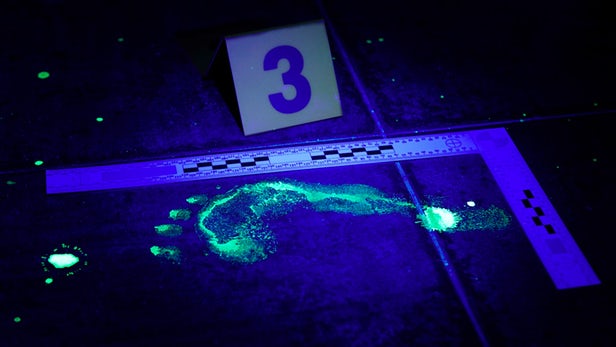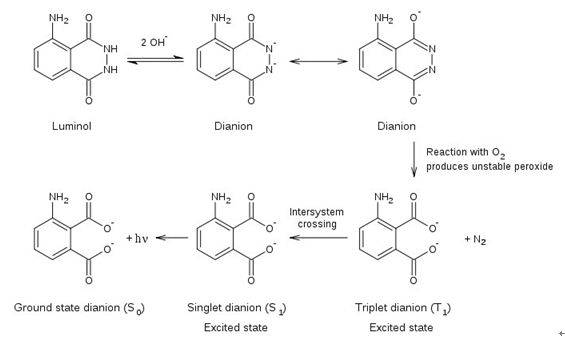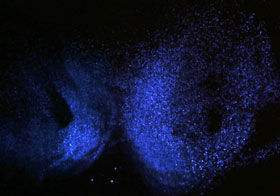Do you like crime series? Such as CSI?
At the crime scene, investigators often spray a kind of liquid to the floor or wall, and then irradiate it with special light, in which way they can find the hidden blood at the scene.

What is this magical liquid?
Mystic Reagent—Luminol
Chemiluminescence reagent luminol is commonly used at the scene of the crime to reveal very tiny amounts of blood that the naked eye cannot observe. It is soluble in water and most organic polar solvents. The reagent used in forensic identification is actually a mixed solution of luminol and hydrogen peroxide.
Principles of Blood Identification
In the experiment, solution of hydrogen peroxide and hydroxide base is generally used as activator, in which hydrogen peroxide is catalyzed to decompose by iron-containing compounds. Luminol (CAS 521-31-3) reacts with the hydroxide to form dianions, which in turn reacts with the oxygen generated by the decomposition of hydrogen peroxide to produce 3-aminophthalic acid in the excited state. When it comes back to the ground state, it will give out blue light.

Hemoglobin in blood contains iron, which can catalyze the decomposition of hydrogen peroxide, and make it into H2O and mono-oxygen, mono-oxygen will reoxidize luminol. The method is highly sensitive, and can detect blood with the content of one in a million. No matter what way the blood is handled, it will occur fluorescence reaction with luminol reagent.

Precautions
1. The light can last for about 30s, but the surrounding environment cannot be too bright;
5. Luminol may interfere with other tests, except DNA extraction.
Luminol (3-Aminophthalhydrazide), ancient and common reagent, it not only can be used for criminal detection, but also can be used for clinical luminescence immunoassay, which is a novel ultramicro analysis technique established by combining luminescence analysis with immune response, and luminol and its derivatives are the commonly used chemiluminescent agents for the labeling of luminescent immunoassay.
Copyright © Suzhou Yacoo Science Co., Ltd. All Rights Reserved
Friendly Links :
online service